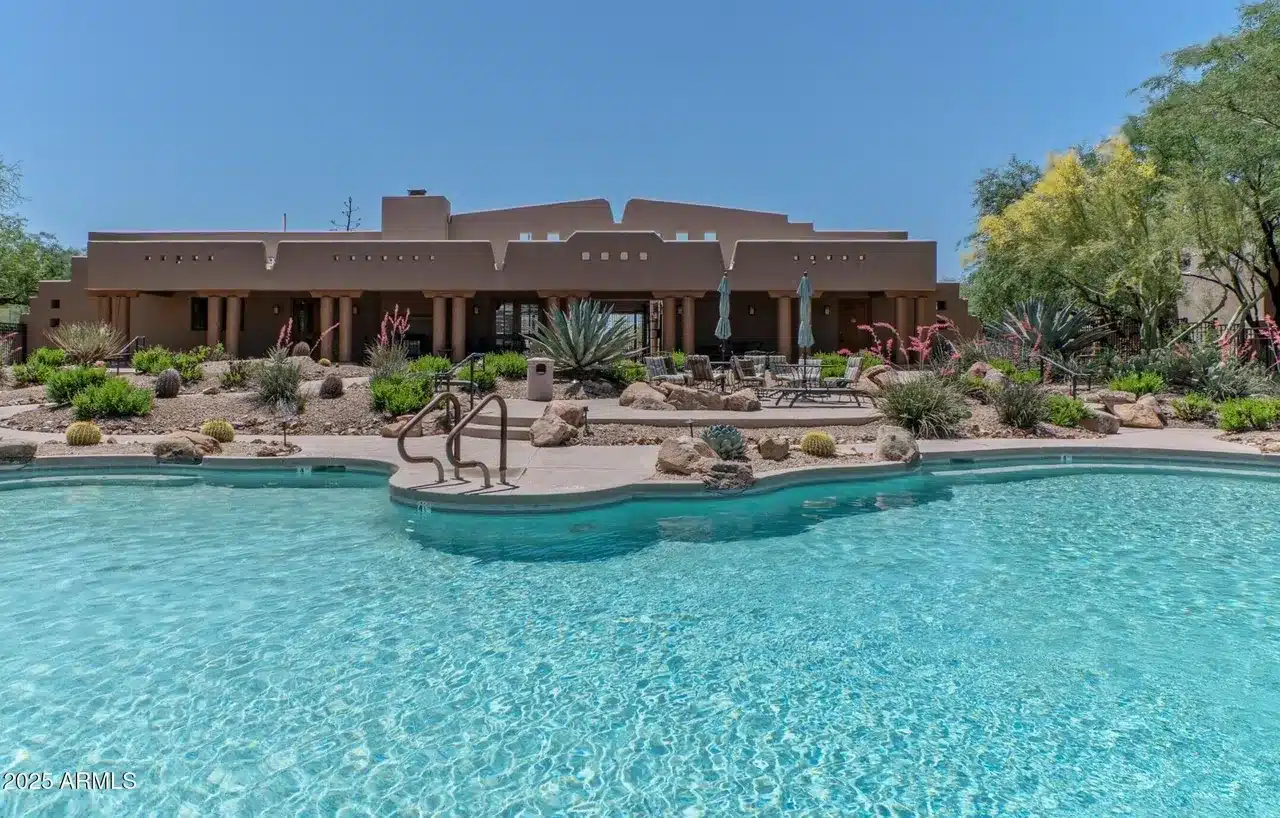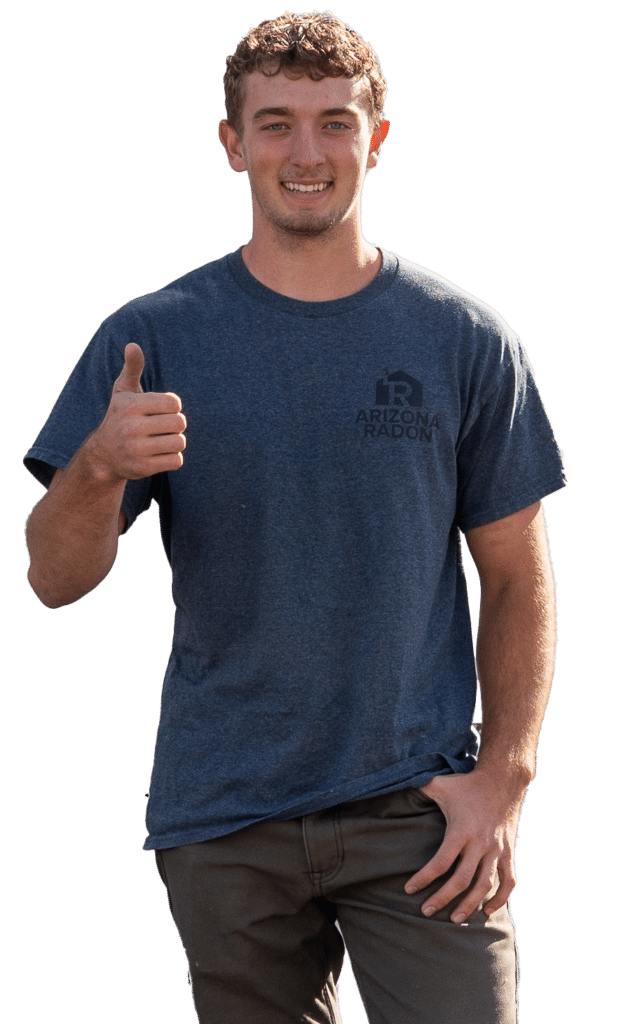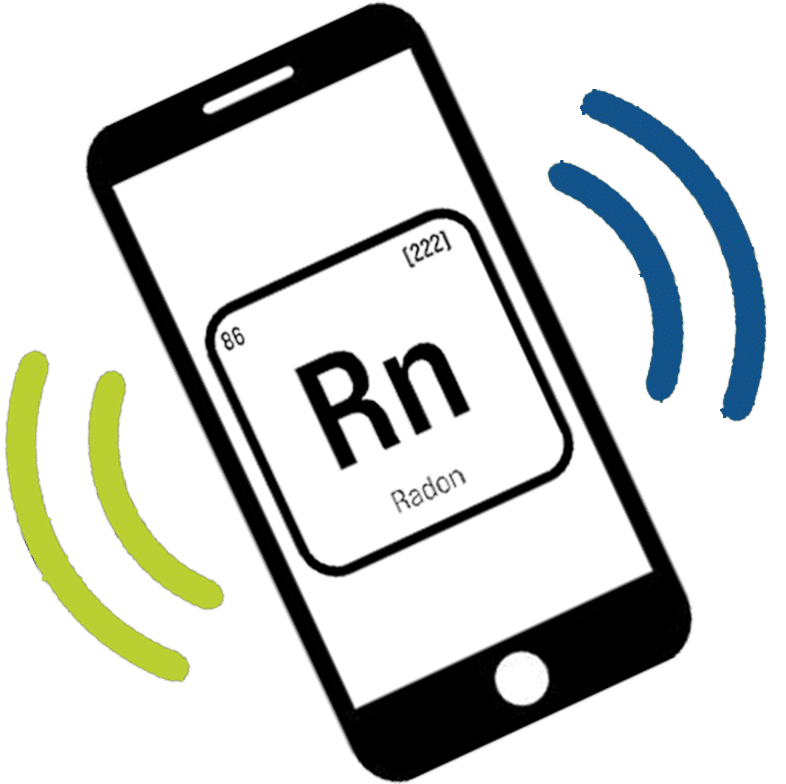Case Study: Radon Mitigation for a Residential Home in Carefree, AZ
- Kaber Robinson

Disclaimer: There is no known safe level of radon exposure. Any reference to the term “safe” in our materials is intended solely to indicate that the home’s radon levels have been reduced, thereby making it safer relative to its prior condition. This does not imply the complete elimination of risk associated with radon exposure.
Background
A luxury townhome located near the Boulders Resort in Carefree, Arizona, underwent radon testing during a pre-sale inspection. The home, built in the mid-2000s with a slab-on-grade foundation, measured over 3,000 square feet and featured high-end finishes throughout. Testing revealed radon levels of 18 pCi/L—more than four times the EPA’s recommended action level of 4 pCi/L. The seller and buyer both wanted the issue addressed to protect the health of future occupants and ensure the property’s smooth closing.
Client Concerns
Health and Safety: Radon exposure posed an immediate health risk for the incoming homeowners.
Real Estate Transaction: High levels threatened to delay or complicate the sale.
Long-Term Solution: A reliable and discreet mitigation system was necessary for ongoing protection.
Objectives
Reduce radon levels below the EPA’s action threshold of 4 pCi/L.
Install a mitigation system that works with the townhome’s shared wall structure and HOA requirements.
Ensure the system remains energy-efficient and low-maintenance.
Process Description
Initial Inspection and Testing
Pre-mitigation radon levels: 18 pCi/L
Air circulation analysis: Limited natural ventilation due to tightly sealed windows and energy-efficient construction.
Air quality assessment: Indoor PM2.5 levels measured 35 µg/m³, classified as “Unhealthy for Sensitive Groups.”
Radon Mitigation System Installation
Installed a sub-slab depressurization system with a low-profile radon fan approved for HOA guidelines.
Vent piping is routed discreetly through the garage and exhausted above the roofline to comply with community aesthetics.
Foundation cracks and plumbing penetrations are sealed to prevent radon entry.
Post-Installation Testing
Final radon level: 1.9 pCi/L, safely below the EPA action level.
Air circulation improvements: Adjustments to HVAC air exchange increased airflow throughout the unit.
Post-mitigation air quality: PM2.5 levels dropped to 11 µg/m³, reclassified as “Good.”
Measurable Results
Radon Levels Before and After Mitigation
| Stage Radon | n Level (pCi/L) |
|---|---|
| Before Mitigation | 18 |
| After Mitigation | 1.9 |
Air Quality (PM2.5 Levels) Before and After Mitigation
| Stage | PM2.5 Level (µg/m³) |
|---|---|
| Before Mitigation | 35 |
| After Mitigation | 11 |
Client Testimonial
“We were worried the radon results would delay closing, but Arizona Radon handled everything quickly and professionally. The system is discreet, the air feels fresher, and we’re relieved to have documented proof that the problem was solved.”
— William, Carefree, AZ
Long-Term Benefits
Safer Indoor Air Quality: Radon levels reduced well below EPA thresholds.
Improved Air Quality: PM2.5 reduction supports healthier breathing.
Compliance with HOA Standards: Discreet installation preserved property aesthetics.
Real Estate Value: A professionally installed system reassures current and future owners.
Project Cost
The total cost of the radon mitigation project was $4,800, including installation, sealing measures, and post-installation testing. The project was completed in four days, meeting the real estate transaction timeline.
Conclusion
If you live in Carefree or the surrounding North Valley communities and are concerned about radon, professional mitigation ensures your home is both healthier and more marketable. Contact Arizona Radon, LLC today to schedule a consultation and protect your property from this invisible hazard.

Bio:
Kaber Robinson, a second-generation radon mitigator and the founder of Arizona Radon, has accumulated 30 years of experience in the industry. A nationally certified radon measurement and mitigation professional, Kaber’s commitment to health and environmental sustainability led him to the radon field after graduating from a renowned technical college in Kansas.
Gaining invaluable experience with a leading radon mitigation company in the United States, he traveled extensively to install systems across various environments. Today, Kaber applies his extensive knowledge and practical skills at Arizona Radon, where he ensures that each project adheres to the strictest standards of quality and safety.




